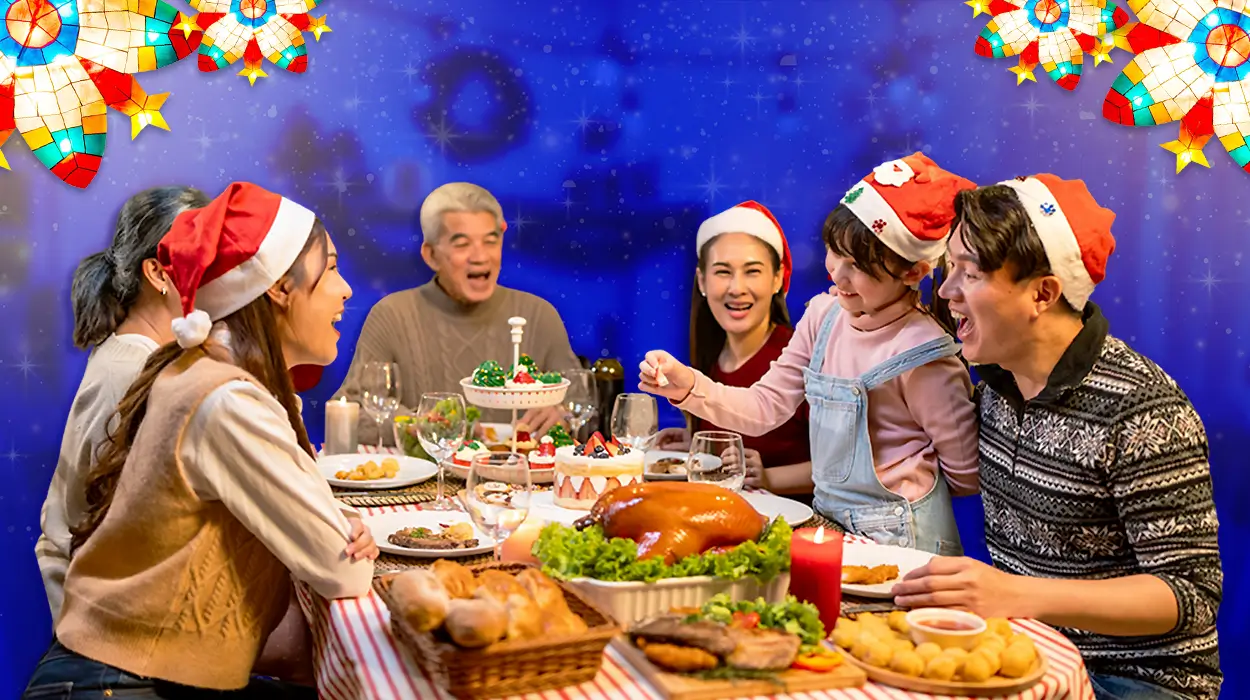Ever noticed how food content from the Philippines consistently stops you mid-scroll? There’s a reason for that. While everyone’s chasing the next viral dance trend, Filipino food influencers are creating content with staying power—authentic culinary stories that resonate far beyond their home country.
For PR specialists hunting for partnerships with actual impact, these creators offer something increasingly rare: genuine cultural connections paired with impressive engagement metrics. Whether you’re representing food brands or companies looking to tap into Filipino markets, understanding these influencers’ unique approaches could transform your next campaign from forgettable to feast-worthy.
Let’s break down what makes these seven standouts worth your attention.
Top Filipino Food Influencers:
- Erwan Heussaff
- Ninong Ry
- Judy Ann Santos
- Abi Marquez
- Marvin Agustin
- Vanjo Merano
- Juju (Jujumaoeats)
Erwan Heussaff
The Culinary Storyteller
When a food influencer wins a James Beard Award, you know they’re playing in a different league. With 4.6M Instagram followers, Erwan Heussaff has transcended typical influencer status through FEATR, his media company producing comprehensive food tours that dive deep into the Philippines’ regional cuisines.
Unlike creators making quick, trendy content, Heussaff invests in substantial documentary-style pieces that showcase both street food vendors and culinary experts. His audiences don’t just watch, they learn as he maintains exceptional viewer retention on longform YouTube content despite running counter to “shorter is better” conventional wisdom. When his audience engages, they stay engaged—a critical metric for PR campaigns requiring more than surface-level attention.
The key with Heussaff is cultural alignment. His mission, as stated in his James Beard acceptance speech, is about “figuring out how to make [Filipino food] just a big thing.” Brands that genuinely support this cultural elevation rather than simply seeking product visibility will find the most receptive partnership opportunities with this culinary storyteller who’s redefining how Filipino food is presented to global audiences.
Ninong Ry
Mastering the Art of Cooking With a Side of Humor
Ever watched a cooking video where the chef actually admits when they mess up? That’s exactly why Ninong Ry’s 2.31M YouTube subscribers can’t get enough of him. In a world where everyone’s trying to look perfect, this theater-trained chef keeps it real—showing the failures along with the successes. It’s this authenticity that builds something money can’t buy: genuine trust.
His videos are a full sensory experience where you can practically hear the sizzle and smell the garlic hitting hot oil. Surprisingly, viewers stick around for his 30-minute (or even hour-long) videos—practically an eternity in today’s short attention span world. His followers don’t just watch, they actually cook what he demonstrates. Think about what that means for product placements—these aren’t passive viewers; they’re people actively shopping for ingredients they saw in his videos.
When he collaborated with Erwan Heussaff, their audiences crossed over beautifully, showing how the right partnership can amplify reach without feeling forced. The bottom line? If you want your brand associated with someone whose audience truly trusts their recommendations, Ninong Ry’s honest approach creates the perfect recipe for authentic engagement.
Judy Ann Santos
From Screen Star to Kitchen Queen
Remember when celebrities just slapped their names on cookbooks without knowing a spatula from a spoon? Judy Ann Santos flipped that script completely. Already adored as one of the Philippines’ biggest actresses, she didn’t just dabble in cooking—she went all in, getting formally trained at the Center for Asian Culinary Studies and building a YouTube cooking empire with 1.8M subscribers who tune in for something that feels refreshingly real.
What makes her special? When viewers watch “Judy Ann’s Kitchen,” they’re not just seeing another celebrity hobby—they’re connecting with someone whose cookbook literally won international awards (Gourmand International’s Cookbook Award, to be exact).
Her content hits that sweet spot between traditionally Filipino and practically doable, showing viewers how to make classics with whatever ingredients they actually have in their pantry. As one review perfectly put it, watching her cook feels like “watching our mothers cook for us”—that’s an emotional connection you simply can’t fake.
Her restaurant co-ownership means campaigns can move beyond just digital content into real-world experiences—something few influencers can offer. In a landscape full of overnight content creators, Judy Ann brings something increasingly rare: credibility that’s been years in the making.
Abi Marquez
The Experimental “Lumpia Queen”
What happens when you take a traditional Filipino spring roll wrapper and start experimenting like a mad scientist? You get Abi Marquez, the 24-year-old “Lumpia Queen” who’s turned food wrapping into an art form that 4.4M TikTok followers and 1.4M Instagram fans can’t get enough of.
While most viral food content feels random, Marquez’s approach is surprisingly methodical—she dissects food structure and rebuilds it with her signature twist. And when Gordon Ramsay (yes, THAT Gordon Ramsay) tried her Beef Wellington lumpia and declared “I don’t like it. I f***ing love it! That is a very posh spring roll,” you know she’s onto something special.
Her rapid rise hasn’t gone unnoticed in the industry either—TikTok Foodie Creator of the Year 2023, a Webby Award, and Forbes 30 Under 30 aren’t just nice accolades; they’re proof her content strategy works.
Here’s what matters: people don’t just watch her videos—they save them at extraordinary rates. That means they’re coming back, trying the recipes, and showing friends. In an overcrowded food content landscape, Marquez has created something increasingly rare—a truly distinctive style that viewers can recognize instantly, even with the sound off.
Marvin Agustin
Serving Hits, On-Screen and Off
Let’s be real, most celebrities slap their names on restaurants and call it a day. Not Marvin Agustin. He actually started as a waiter before hitting it big as an actor. Now with 1.6M TikTok followers and 22 restaurants to his name, that humble beginning gives him a perspective most celebrity food personalities can’t touch.
You know how you can always tell when someone actually knows what they’re talking about versus just reading a script? That’s the difference here. Agustin didn’t just wake up famous and decide to play restaurant owner—he put in the work, got formal training at the International School for Culinary Arts and Hotel Management, and built spots like Sumo Sam and John and Yoko from the ground up.
Agustin offers something much rarer—credibility that extends from social feeds into real-world business success. In the crowded food influencer space, that’s like finding a unicorn who can actually cook.
Vanjo Merano
The OG of Filipino Recipes
Before Filipino food content was trending, Vanjo Merano was doing the work. While his 688.8K Instagram followers might not sound massive compared to some viral sensations, here’s what PR specialists need to understand: this guy owns Google. Seriously—try searching for any Filipino recipe right now. Chances are, his Panlasang Pinoy site will be sitting right at the top of your results.
That kind of search dominance is pure gold for brand partnerships. Why? Because Merano’s content has staying power. People aren’t just stumbling across his recipes in their feeds—they’re actively searching for them, sometimes years after they were published.
He keeps it refreshingly straightforward. No gimmicks, no catchphrases—just clear, authoritative tutorials that actually teach you how to make authentic Filipino food. His audience does more than watching, they actually try his recipes.
The key to working with Merano? Respect for tradition. His audience values authenticity above all, so partnerships that honor Filipino culinary heritage while offering practical improvements resonate most. In influencer marketing, sometimes the steady, trusted voice outperforms the loudest one—and Merano has been the trusted voice in Filipino cooking long before most people were filming their food.
Juju (Jujumaoeats)
Master of Engaging Short-Form Content
You know those rare food videos that make you stop mid-scroll every time? That’s Juju’s superpower. With his signature “Oo, baby” catchphrase and the ability to make you crave something in under 30 seconds, he’s built a massive following—1.2M on Instagram, 2.7M on TikTok—by perfecting the art of engaging, bite-sized content.
While others drag out cooking videos, Juju keeps it fast, visually sharp, and effortlessly immersive. His quick cuts, spot-on pacing, and just-enough narration make you feel like you’re right there with him. The result? Engagement metrics that consistently outperform industry benchmarks.
Juju doesn’t rely on complicated recipes or hard-to-find ingredients. He makes Filipino favorites with everyday staples, creating the perfect opportunity for brands that want to feel relatable, not just aspirational. Plus, unlike many influencers who dominate one platform but flop on another, Juju thrives on both Instagram and TikTok, making campaign planning smoother and more effective.
For brands looking to collaborate, the formula is simple: keep it quick, visual, and aligned with his style. His audience expects concise, high-impact content, and products that fit this format will shine. In a world of overcomplicated food content, Juju proves that simplicity—done right—is exactly what people crave.
Platform Optimization Guide for Filipino Food Influencer Campaigns
When planning campaigns with these influencers, platform-specific approaches yield significantly better results:
YouTube Strategy:
- Long-form content (8+ minutes) performs exceptionally well with Erwan Heussaff, Ninong Ry, and Judy Ann Santos
- Documentary-style and tutorial formats generate higher completion rates than vlog-style content
- Educational components significantly increase save rates and return viewership
TikTok Approach:
- Transformation content showing before/after food preparation performs best (particularly with Abi Marquez)
- Sound-driven content capturing cooking processes generates higher engagement than music overlays
- Challenge frameworks create higher sharing rates than standard demonstrations
Instagram Performance:
- Carousel tutorials showing step-by-step processes receive significantly more saves than single images
- Behind-the-scenes content showcasing preparation techniques outperforms final dish presentations
- Stories featuring personal cooking insights generate more direct responses than feed posts
Seasonal Considerations for Filipino Food Campaigns
Filipino food content demonstrates clear seasonal performance patterns worth considering in campaign timing:
Peak Engagement Periods:
- December (Christmas season) – Family gathering dishes see engagement spikes
- April-May (Summer) – Refreshing desserts and street food content performs exceptionally well
- June-October (Rainy season) – Comfort food and soup-based content generates higher implementation rates
For maximum campaign impact, align content themes with these seasonal patterns rather than fighting against established viewing habits.
The Measurement Matrix: Beyond Basic Metrics
For PR specialists seeking deeper campaign impact, these measurement frameworks capture more meaningful results than standard engagement rates:
Sentiment Analysis: Monitor comment sections for specific language indicating authentic cultural appreciation rather than mere entertainment value.
Implementation Evidence: Track hashtags where audiences recreate demonstrated recipes—a stronger conversion indicator than passive engagement.
Cross-Platform Journey Mapping: Follow how content travels between platforms through shares, screenshots, and discussions—revealing true campaign reach beyond initial posting.
Brand Association Shifts: Survey perception changes before and after campaigns to measure how influencer partnerships affect brand positioning in cultural contexts.
FAQ: Filipino Food Influencer Partnerships
How do engagement rates for Filipino food influencers compare to global averages?
Filipino food influencers typically generate higher retention rates on long-form content compared to global averages—particularly for content highlighting traditional techniques or cultural contexts. Ninong Ry’s hour-long videos maintain exceptional completion rates, while Abi Marquez’s experimental content generates save rates well above platform benchmarks.
What types of brands have found success with Filipino food influencers?
Beyond obvious food and beverage categories, successful partnerships have included kitchen equipment, travel companies showcasing culinary destinations, sustainability initiatives highlighting traditional preservation methods, and surprisingly, financial services leveraging the business aspects of culinary entrepreneurship (particularly with Marvin Agustin).
How should brands approach cultural elements in Filipino food collaborations?
The most successful approaches involve collaborative development rather than prescriptive briefs. Include the influencer in concept development to ensure cultural authenticity, and consider regional specificity—Filipino cuisine varies significantly across the country’s 7,000+ islands, making generalized “Filipino food” approaches potentially problematic.
Which content formats perform best with different audience segments?
- Younger audiences (18-24): Experimental techniques (Abi Marquez), short-form content (Juju)
- Culinary enthusiasts (25-34): Professional techniques (Ninong Ry), restaurant insights (Marvin Agustin)
- Family-focused audiences (35-45): Traditional recipes with modern adaptations (Judy Ann Santos)
- Cultural/heritage audiences: Documentary-style exploration (Erwan Heussaff), authentic techniques (Vanjo Merano)
What’s the typical timeline for securing partnerships with top Filipino food influencers?
For established creators like those featured in this list, plan 2-3 months ahead for standard integrations. Major campaign collaborations, particularly during Filipino holiday seasons when food content is in highest demand, may require 4-6 months advance planning. Many top influencers work with management teams and have limited availability for brand partnerships.
How can we measure the ROI of Filipino food influencer partnerships beyond engagement?
Track implementation through hashtags where followers recreate recipes, monitor sentiment shifts in comments comparing pre and post-campaign periods, analyze website traffic patterns from regions with high Filipino populations, and survey brand perception changes focusing on cultural authenticity metrics.
These seven Filipino food influencers represent diverse approaches to culinary content creation—from documentary-style cultural exploration to quick, viral experiments. By understanding their unique strengths and audience connections, PR specialists can develop partnerships that transcend typical product placements to create meaningful cultural conversations around Filipino cuisine.
M2.0 Communications is a Public Relations Firm that specializes in business, technology, and lifestyle communication. We offer a range of PR services including crisis communications, media relations, stakeholder management, influencer marketing, and video production. Learn more about our work on our case studies page.



